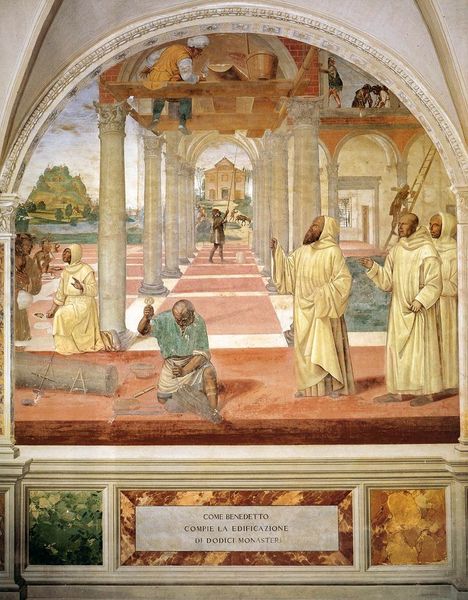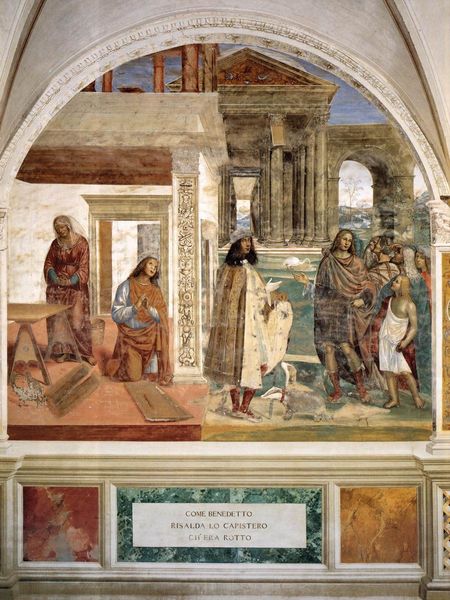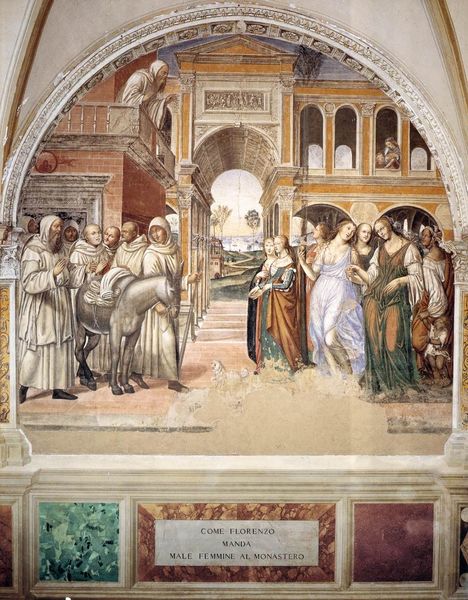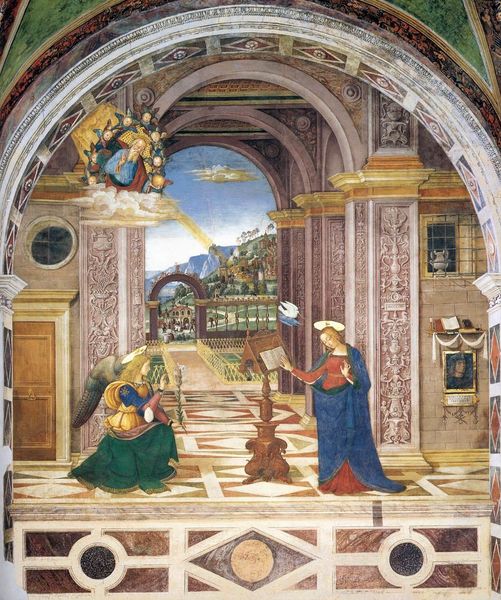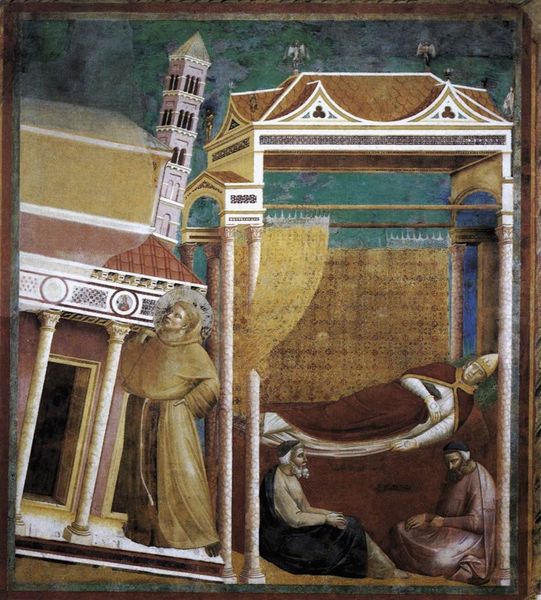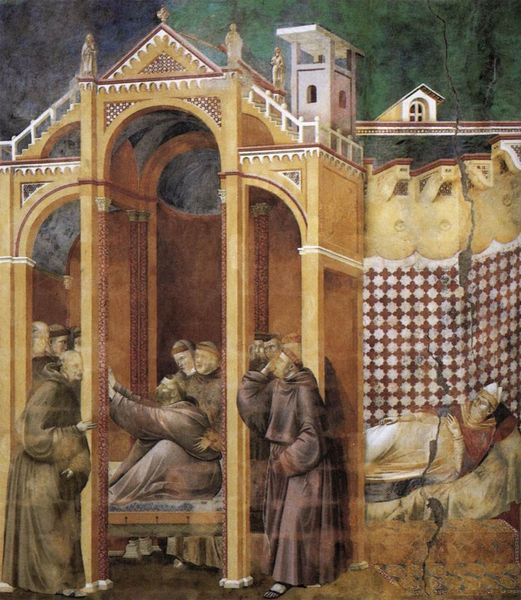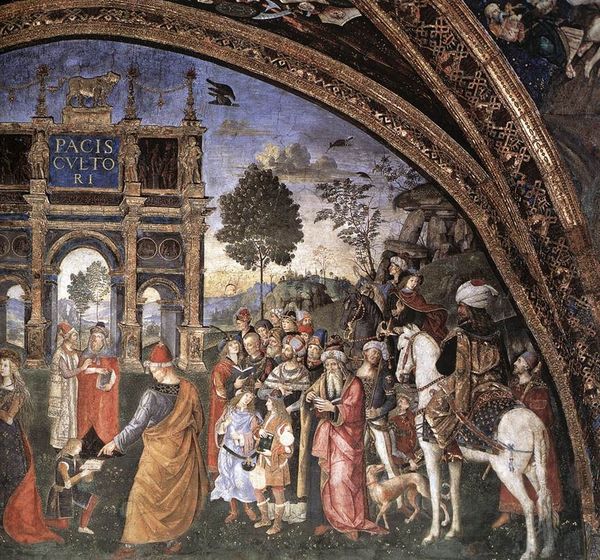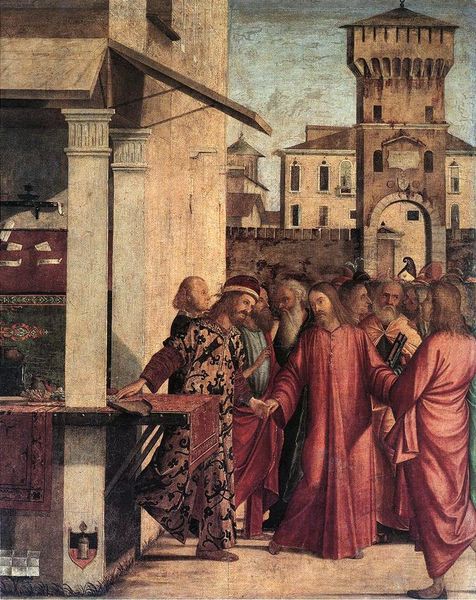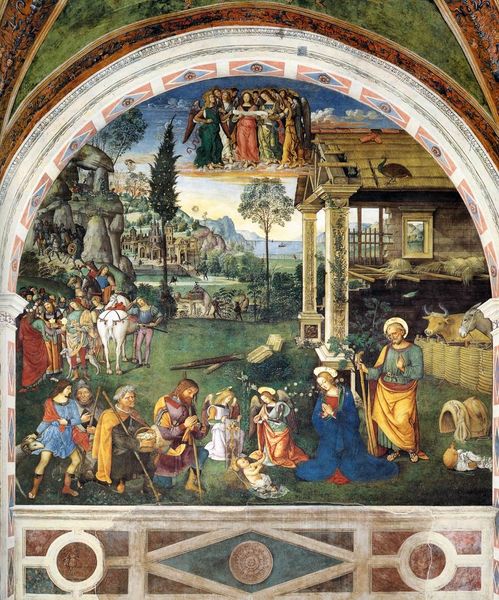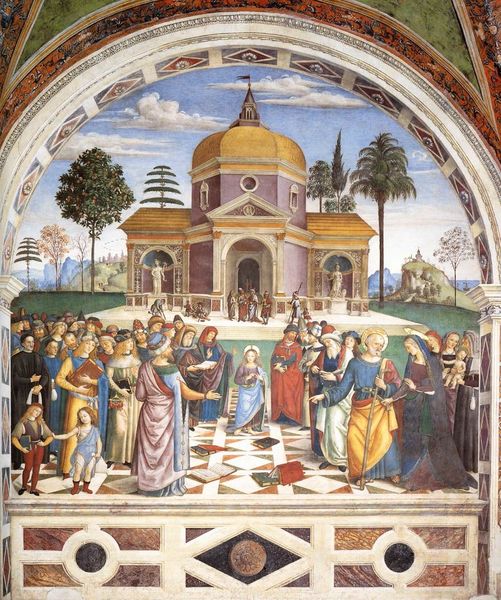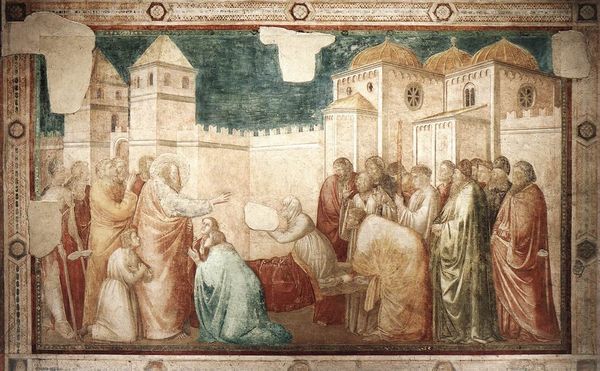
#
unusual home photography
#
toned paper
#
sculpture
#
architectural photography
#
holy-places
#
historic architecture
#
traditional architecture
#
arch
#
showhome propping
#
watercolor
#
historical building
#
architectural design photography
Copyright: Public domain
Il Sodoma painted this fresco of the Life of St. Benedict around the 16th century using a careful process. The artist applied pigments to fresh, wet plaster, allowing the colors to bind as it dried. The fresco technique demanded both speed and precision; once the plaster set, no further changes could be made. This meant Sodoma would have worked with detailed preparatory drawings. Notice how the architecture and figures are rendered with a fine attention to form and perspective, creating an illusionistic world within the cloister. The narrative unfolds with Benedict freeing a monk, signified by the red devil scurrying away. The fresco captures a specific time, when the handmade was valued, and craft was integral to storytelling, and meaning. The artist's labor and skill were as crucial to the artwork's message as the content itself. By understanding the physical making of a fresco, we gain a deeper appreciation for the cultural values it embodies.
Comments
No comments
Be the first to comment and join the conversation on the ultimate creative platform.
